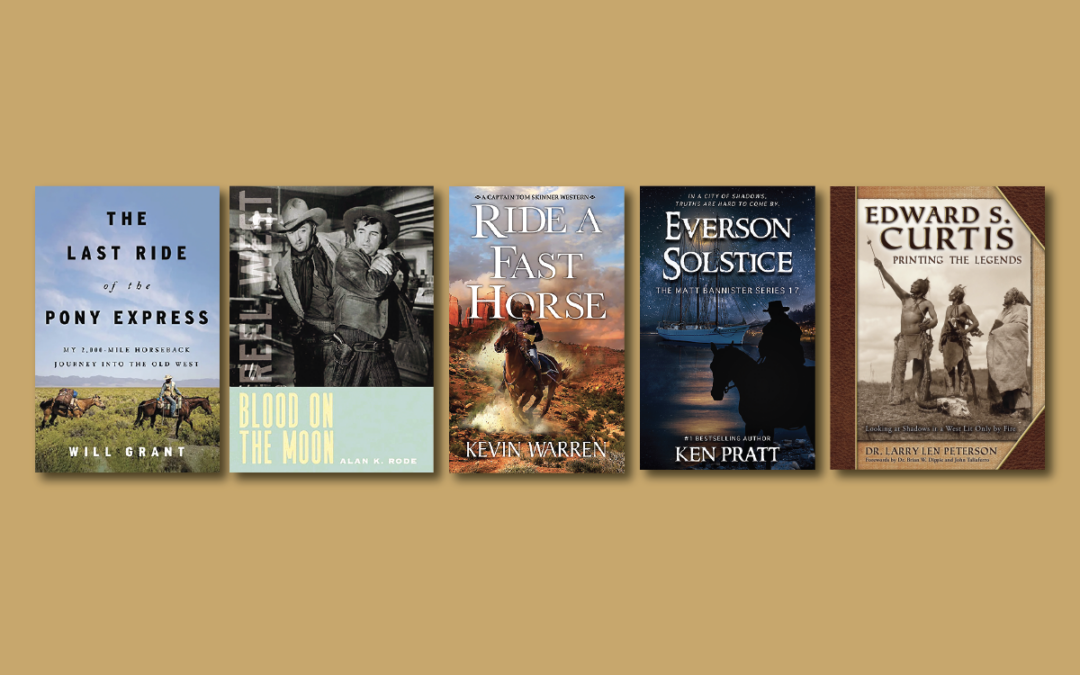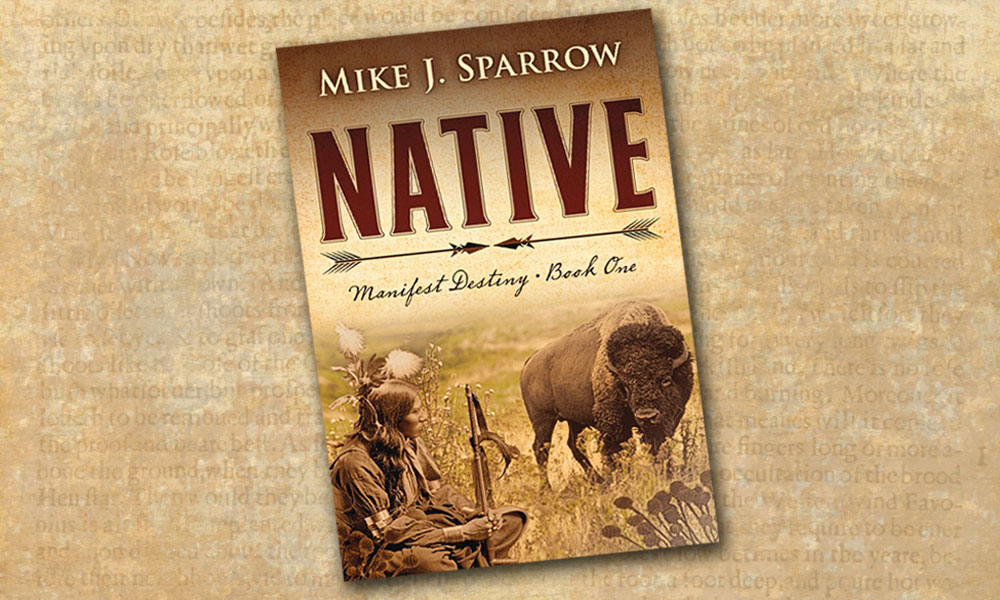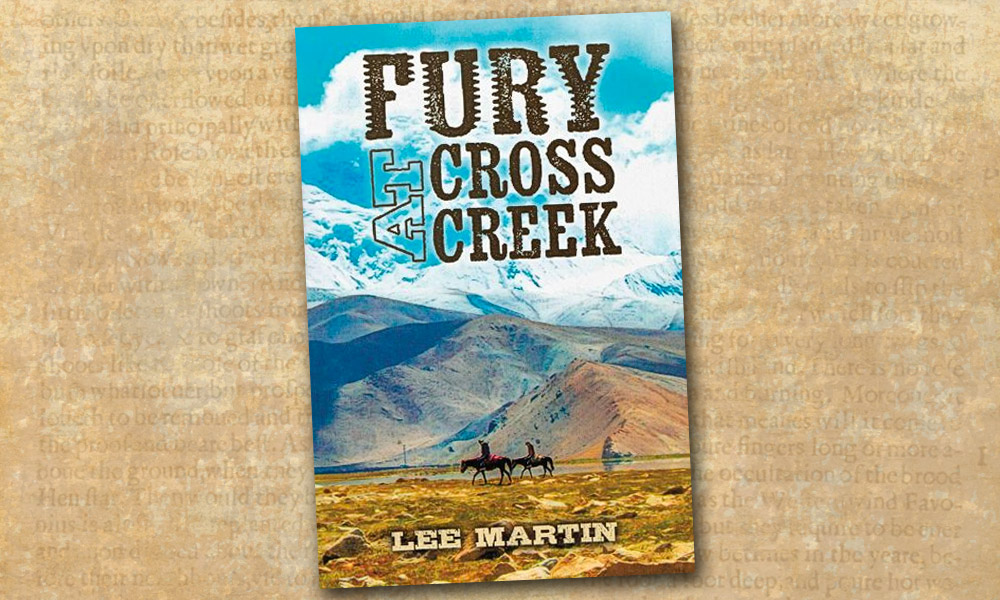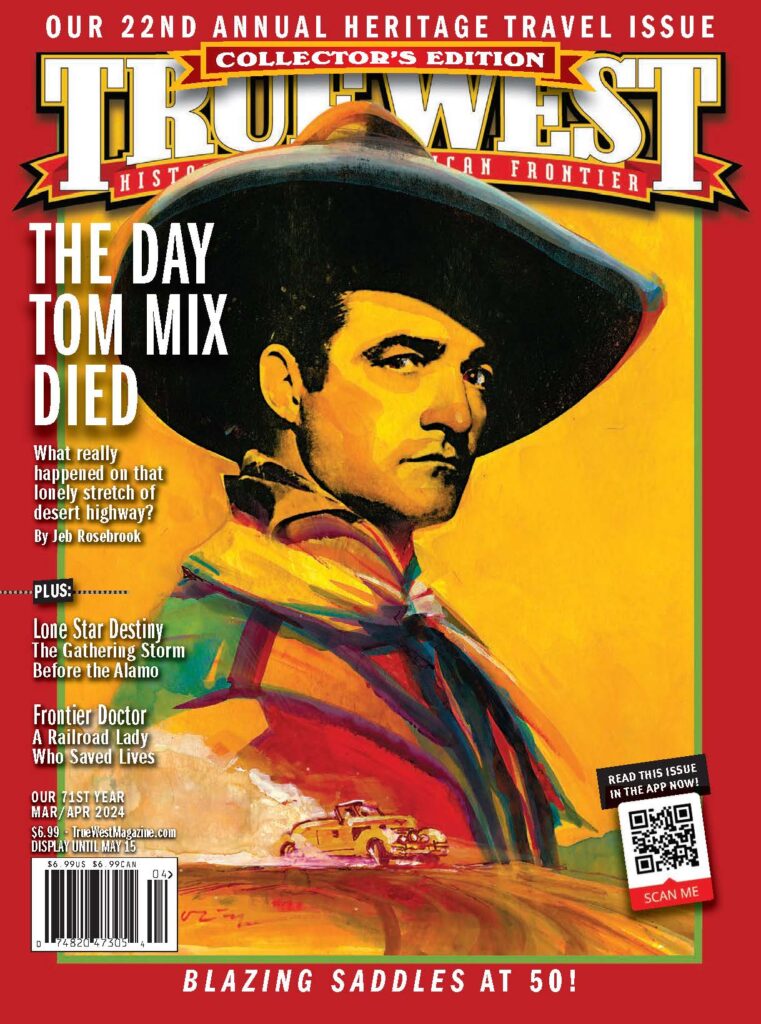Larry Peterson’s extraordinary new biography of Edward S. Curtis, plus two new classic Westerns, a Pony Express travel adventure and a history of a classic Western film noir.
On October 19, 1952, Edward S. Curtis passed away at the age of 84 in Los Angeles. He was interred at Forest Lawn Memorial Park in nearby Glendale. The great irony of the famed photographer’s life, which had started in the small town of Whitewater, Wisconsin, in 1868, was that his eternal resting place would be in the West’s great metropolis of imagination within a short distance of the film studios and Hollywood. Curtis, one of the great photographers of his generation, had died and was buried without fanfare. Like many artists during their lifetimes, Curtis never saw the profits or well-deserved adulation from his life’s work, The North American Indian, a 20-volume portfolio with 2,200 photogravures and a 20- volume book set.
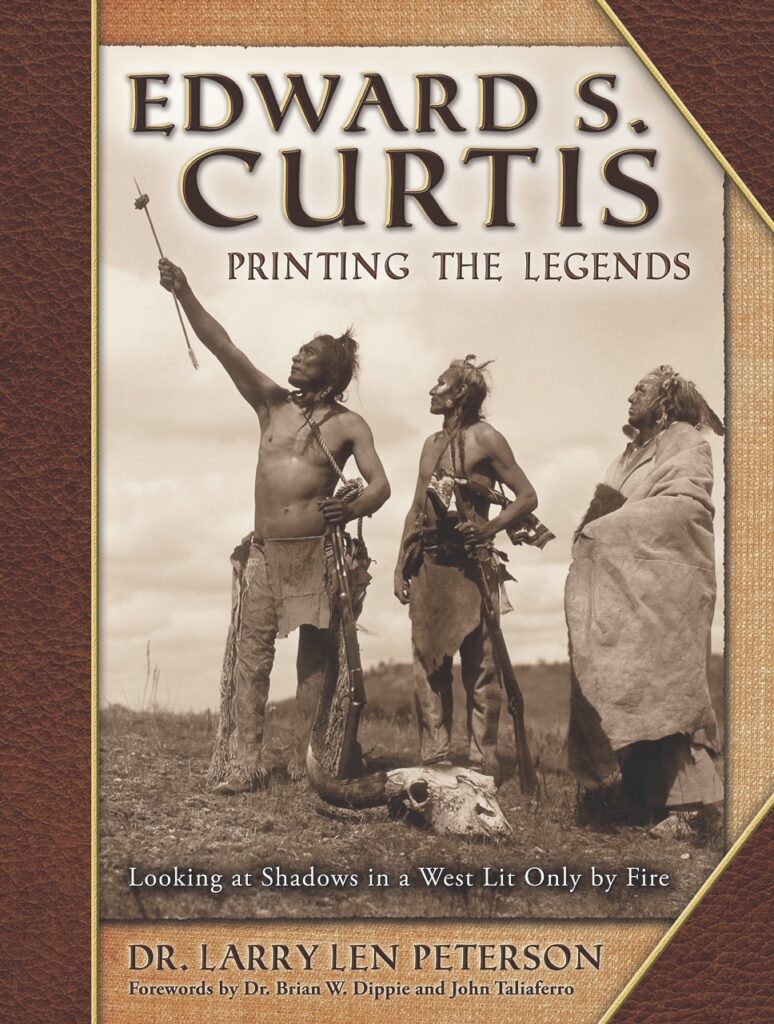
Today, seven decades after his passing, Edward S. Curtis is considered one of the most creative, artistic and visionary photographers in American history. Over the past two decades the value of his photography and ephemeral material has skyrocketed as his life has become well-examined by historians, biographers and art museum curators. Award-winning Western author and collector Dr. Larry Len Peterson, who is well-known for his beautiful Western art books has just published what will undoubtedly be considered the finest book ever published on the photographer: Edward S. Curtis: Printing the Legends, Looking at Shadows in a West Lit Only by Fire (Sweetgrass Books, $79.45).
Collectors, Western history and photography scholars and enthusiasts will want to own a copy of Peterson’s masterwork on Curtis. Peterson’s personal collection of 2,500 Curtis photographs is currently archived in the Larry Len and LeAnne Peterson Big Sky Collection in Montana. As a historian and collector, Peterson was inspired to write the book on Curtis after touring Scottsdale’s Museum of the West’s “Light and Legacy: The Art and Techniques of Edward S. Curtis” exhibition in 2022. How does Curtis inspire Peterson? “A Curtis photogravure unfolds like a musical composition, its images and sepia tones moving the viewer’s eyes around,” writes Peterson in his introduction. “His works and life have a sense of being in warm light, of being near, yet at times not so close, wrapped in a mysterious shroud of shadows.”
Readers of Peterson’s biography of Edward S. Curtis will find their inspiration in both the biographer’s prose and the more than 250 illustrations. Curtis’s photography is beautifully reproduced, and it will take many viewings to absorb the magnitude of the subject matter. The chapter titled “Custer Almost Kills Curtis (1906-1909): Son of the Morning Star” about Curtis’s attempts to prove Custer a fool at Little Bighorn will be of great interest to Western historians.
What should we expect next from Larry Peterson? Based on the standards the Oregon author and publisher has set for himself, Peterson’s next volume of Western history will be an extraordinary collectible. Western book and art collectors owe a great deal of thanks to Peterson and his efforts to write and publish such beautiful books in an era in which publishers are turning more and more to the digital format and abandoning the timeless artisanship of publishing books as an art form. We look forward to his next masterpiece.
—Stuart Rosebrook
Arizona Adventure
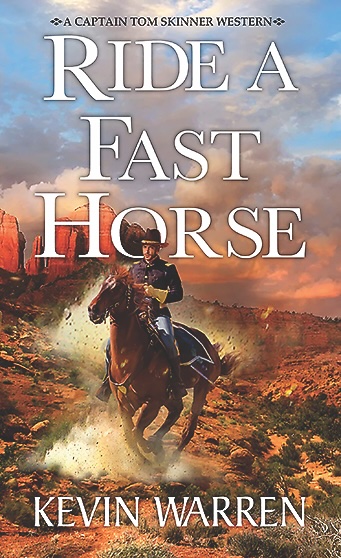
In Ride a Fast Horse by Kevin Warren (Kensington, $8.99), Capt. Tom Skinner, an orphan who grew up hard on the Arizona frontier, has a wonderful way with horses. He rides Too Tall, a horse of amazing speed and stamina, while serving in the U.S. Cavalry. He’s agonizing over having offended the girl he loves when Colonel Brickman sends him out on patrol with only 12 men. Twenty or more of the worst of the worst outlaws have invaded Arizona, and Tom can see they’re headed for the Mogollon Rim where his lady lives, but his orders are to go south. Heading for the Mogollon will cost him his career, but he might arrive in time to save his sweetheart. It’s nonstop action as Tom undertakes one Herculean feat after another.
—Doug Hocking, author of Southwest Train Robberies
Northwest Escapade
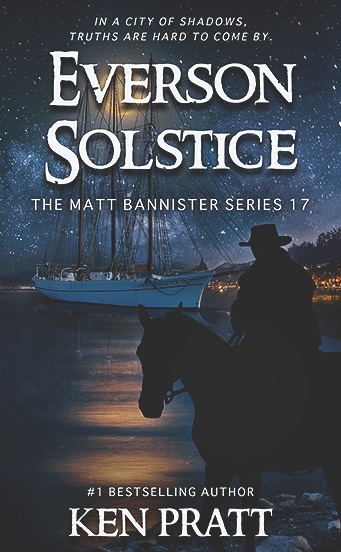
Author Ken Pratt excels at writing fast action in well-drawn settings. In Everson Solstice, his 17th Matt Bannister Christian Western mystery (Wolfpack, $12.99), Pratt sends the accomplished U.S. Marshal to Portland, Oregon, circa 1884 on a personal mission of grave concern. Bannister’s son Gabriel Smith and companion Evan Gray are caught up in Portland’s sinister side, and it’s up to Matt to set things straight. Pratt shines with exuberant descriptions of the old Northwest, and his breathless drops of history and wondrous true-life anecdotes add depth and dimension to his prose. Spiritual leanings (or lack thereof) grace the main characters with Pratt’s usual tactful poise, making the narrative natural and never preachy. This is a stand-alone entry that can be enjoyed for its own merits, but readers will also benefit by knowing what’s come before.
—Richard Prosch, author of Pony Boys
Ride, Cowboy, Ride!
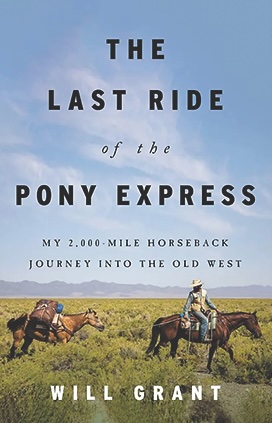
Santa Fe-based writer Will Grant knows horses. After working on ranches in Colorado and Texas, he raced the legendary Mongol Derby, a 900-mile horse race in Mongolia. But it was his 2,000-mile journey across the American West that may have been his biggest challenge. Grant’s The Last Ride of the Pony Express (Little, Brown and Co., $21) is an exciting and often reflective personal journey in the wake of the young and intrepid Pony Express riders of the 19th century. Traveling from Missouri to California with his two trusted horses, Grant captures a snapshot of the modern West that few people see. He proves that there are still many miles of untamed wilderness while acknowledging the inevitable modern developments that have occurred along the Pony Express route.
—Erik J. Wright, assistant editor of The Tombstone Epitaph
Classic Western Rediscovered
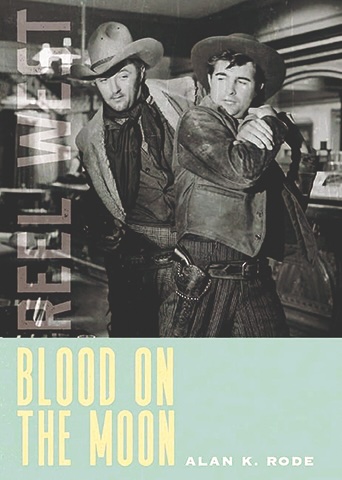
Alan K. Rode makes a persuasive case that the noir Western Blood on the Moon (University of New Mexico Press, $19.95) beyond being an excellent film, also set the stage for the celebrated Anthony Mann/James Stewart and Budd Boetticher/Randolph Scott post-war collaborations. Rather than just the story of one exceptional movie, Rode puts Blood in the context of a transitional moment in post-war Hollywood, revealing the career of celebrated director Robert Wise, the vastly under-appreciated novelist Luke Short (Frederick Glidden), Robert Mitchum’s rise from Hopalong Cassidy villain to stardom, and the parallel fall of RKO. Robert Preston plays a soulless charmer promoting a range-war to swindle both sides; Mitchum is the friend Preston hopes will assist. Often imitated, the copies never captured the true cunning or true heart of Short’s original.
—Henry Parke, author of The Greatest Westerns Ever Made and the People Who Made Them
Rough Drafts
Congratulations are in order to True West’s Executive Editor Bob Boze Bell, who will be honored with the Will Rogers Medallion Award’s Golden Lariat, which is given to individuals for support of WRMA and the art of storytelling about the American West. New York Times bestselling author Jane Kirkpatrick will receive the Lifetime Achievement Award. The awards will be given at a ceremony in Fort Worth, Texas, on October 19, 2024.
Last fall the Annual Will Rogers Medallion Awards honored Larry Martin with the Lifetime Achievement Award, and Craig Johnson received the Golden Lariat.
Congratulations to the 2023 WRMA gold medal winners:
Western Biographies and Memoirs: Wild Bill Hickok and Buffalo Bill Cody: Plainsmen of the Legendary West by Bill Markley (TwoDot)
Western Nonfiction (TIE): Billy the Kid: El Bandido Simpático by James B. Mills (University of North Texas Press) and From Sand Creek to Summit Springs: Colorado’s Indian Wars by Linda Wommack (Caxton Press)
Western Fiction, Traditional (Pre-1900): Rio Hondo by Preston Lewis (Five Star)
Western Short Stories: “Irish Kelly and the Heartbreak Kid” from Rebel Hearts Anthology by Sharon Sala (Wolfpack Publishing)
Western Maverick: Blood West by Thomas D. Clagett (Five Star)
Western Cookbook: The Tombstone Cookbook: Recipes and Lore from the Town Too Tough to Die by Sherry Monahan (TwoDot)
Western Short Nonfiction: “The Kid’s Mom” by Melody Groves, Wild West Magazine
Western Film—Drama: Dead For a Dollar, writer: Walter Hill; producers: Carolyn McMaster, Neil Dunn and Jeremy Wall (CHAOS & Polaris Pictures)
Western Film—Documentary: Battle of Red Buttes, writers: Candy Moulton and Bob Noll; producer: Candy Moulton (Boston Productions [BPI])
True West also wants to congratulate Bill Markley on his WRMA Bronze Medallion for Western Short Nonfiction for his June 2022 True West feature “Gunpowder and Smoke.”
—Stuart Rosebrook
Building Your Western Library
A Montana Author’s Big Sky Bookshelf
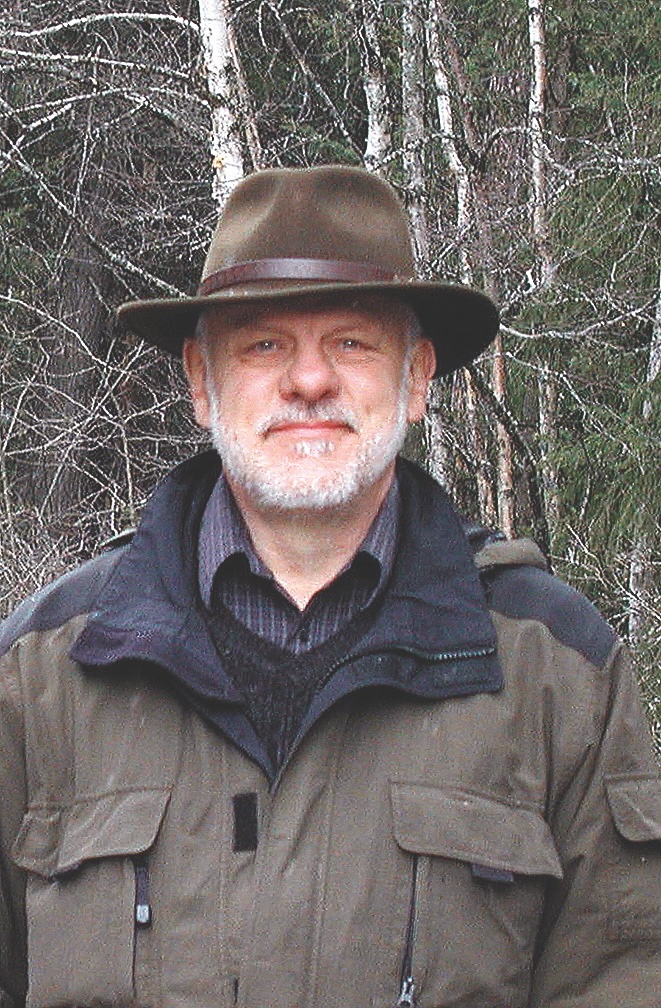
Bill Yenne grew up in the Rocky Mountains of western Montana, where he spent a great deal of time on horseback in the backcountry. He is the author of several dozen nonfiction books and a dozen novels. His works include a critically acclaimed biography of Sitting Bull, as well as the Fugitive Gideon Safford Trilogy and the Bounty Hunter Bladen Cole series of Western novels.
Speaking Ill of the Dead and Still Speaking Ill of the Dead edited by Dave Walter, John Axline and Jodie Foley (Two Dot). The popular “Jerks in Montana History” franchise includes 28 vignettes about forgotten and unforgettable scoundrels.
Free Grass to Fences: The Montana Cattle Range Story by Robert Henry Fletcher (University Publishers). Broad historic scope; insightful read! Fletcher was the Montana poet and PR man who co-composed (lyrics) the song Don’t Fence Me In with Cole Porter.
Ride with Me, Mariah Montana by Ivan Doig (Simon and Schuster). In the last of the popular McCaskill trilogy, an aging Jick McCaskill and impetuous daughter Mariah are on a Montana roadtrip during the 1989 Centennial.
Trails Plowed Under: Stories of the Old West by Charles M. Russell; introduction by Will Rogers (Doubleday). Montana’s greatest artist was also a master storyteller. He knew his subjects and told/painted them brilliantly.
The Old North Trail: Life, Legends and Religion of the Blackfeet Indians by Walter McClintock (University of Nebraska). Originally published in 1910. Priceless oral history, amazing lore, preserved from being lost.
Editor’s Note: Bill Yenne also contributed “The Main Street of Montana History” on page 94.

